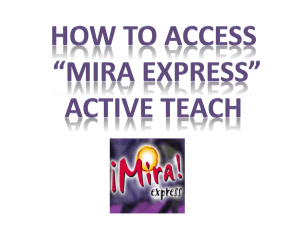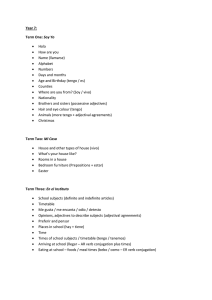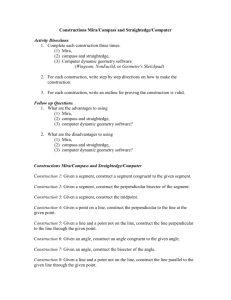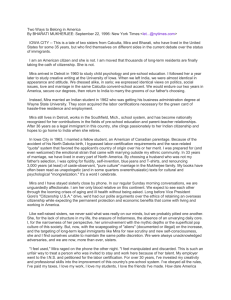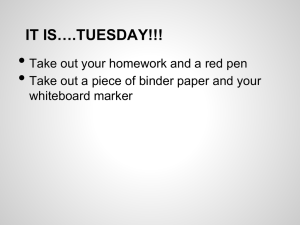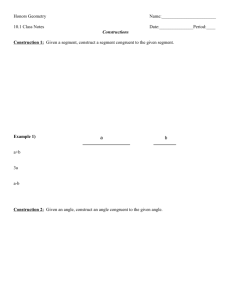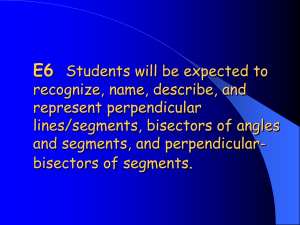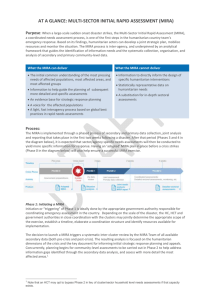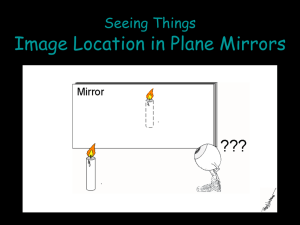Mira basic constructions
advertisement
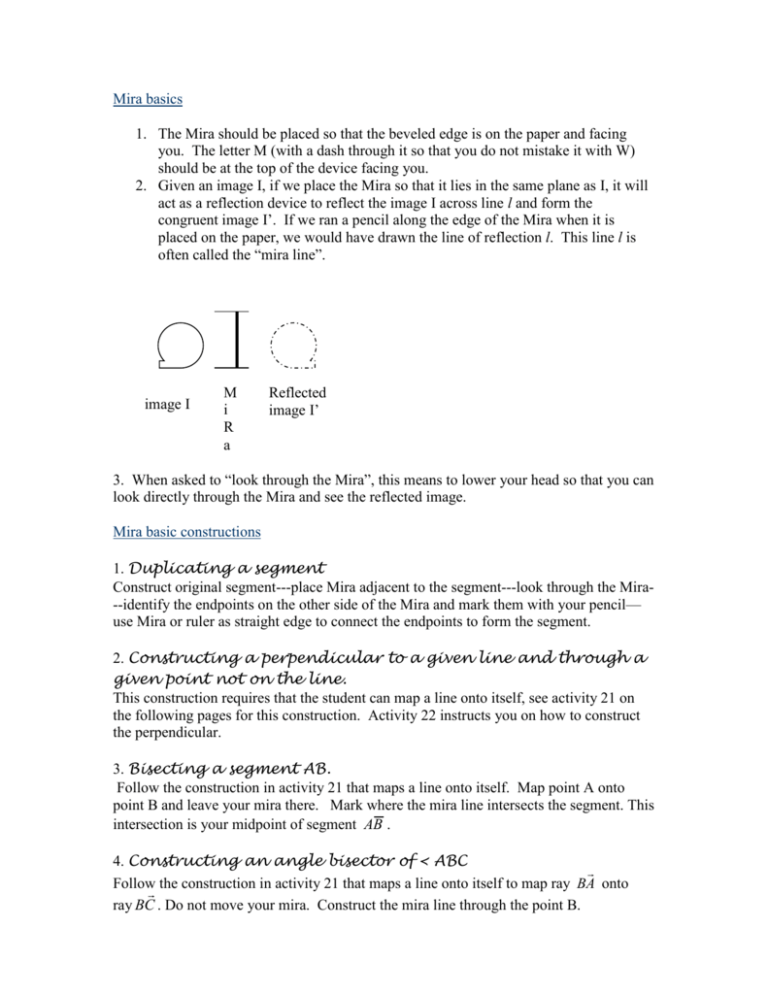
Mira basics 1. The Mira should be placed so that the beveled edge is on the paper and facing you. The letter M (with a dash through it so that you do not mistake it with W) should be at the top of the device facing you. 2. Given an image I, if we place the Mira so that it lies in the same plane as I, it will act as a reflection device to reflect the image I across line l and form the congruent image I’. If we ran a pencil along the edge of the Mira when it is placed on the paper, we would have drawn the line of reflection l. This line l is often called the “mira line”. image I M i R a Reflected image I’ 3. When asked to “look through the Mira”, this means to lower your head so that you can look directly through the Mira and see the reflected image. Mira basic constructions 1. Duplicating a segment Construct original segment---place Mira adjacent to the segment---look through the Mira--identify the endpoints on the other side of the Mira and mark them with your pencil— use Mira or ruler as straight edge to connect the endpoints to form the segment. 2. Constructing a perpendicular to a given line and through a given point not on the line. This construction requires that the student can map a line onto itself, see activity 21 on the following pages for this construction. Activity 22 instructs you on how to construct the perpendicular. 3. Bisecting a segment AB. Follow the construction in activity 21 that maps a line onto itself. Map point A onto point B and leave your mira there. Mark where the mira line intersects the segment. This intersection is your midpoint of segment AB . 4. Constructing an angle bisector of < ABC Follow the construction in activity 21 that maps a line onto itself to map ray BA onto ray BC . Do not move your mira. Construct the mira line through the point B. Some constructions to work on 1. Construct an equilateral triangle with side AB that you are given below: A Hint: Construct the perpendicular bisector of AB and then construct 2 segments that are congruent to AB and intersect the perpendicular bisector on the same side of AB . B 2. Construct a rectangle (that is not a square) and square on AB . A B A B 3. Draw a circle ( you do not need to use the Mira). a. Mark any three points A,B,C on the circle and draw the triangle ABC. b. Draw the perpendicular bisector of the side AB. How is it related to the circle? c. Draw the perpendicular bisectors of sides BC and CA. How are they related to the circle? (NOTE: the point where all three perpendicular bisectors intersect is called the circumcenter of triangle ABC and is the center of the circle that goes through A,B,C. This circle is called the circumcircle of triangle ABC. ) d. Construct the circumcircle of triangle ABC. 4. Recall that the other special segments/lines in a triangle are the medians, angle bisectors, altitudes. These all have the following respective points of concurrency: centroid, incenter, orthocenter of the triangle. Draw your own triangles and do the appropriate constructions to construct these special points of concurrency. The incenter and orthocenter are also the center of special circle(s). Extra: A point of concurrency often not explored is that of the excenter . The excenter is the intersection of the bisectors of 2 exterior angles and that of the remaining interior angle. The excenter is the center of the excircle, the circle that is tangent to extensions of 2 sides and the remaining side. How many excenters are there? Draw your own triangle and construct the excenter(s).
